Functional Fitness vs Weightlifting: What Is The Difference?
Author:
Reviewed by:
(21 years of Oly Lifting experience)
Unlock your full potential by engaging with our experts and community! Have questions about your fitness journey or looking for expert advice on weightlifting techniques? Don’t hesitate — leave a comment below and Sergii Putsov will provide a personalized answer and insights to help you reach your goals.
Torokhtiy is reader-supported. Some links are affiliate links, and we may earn a commission at no extra cost to you. See our disclosure page for details.
Olympic weightlifting is a traditional sport that is now experiencing a rebirth in popularity, whereas Functional fitnessis one of the largest fitness trends on the globe. Are they really so different? In today’s article, we’ll learn more about functional fitness vs weightlifting.
Olympic weightlifting is a deep sport that teaches just two strength and power exercises: snatch and clean & jerk to the greatest level. Whereas functional fitness is a broad sport that incorporates a large variety of movements, exercises, and physical abilities all trained to a decent level. Let’s take a deep look on functional fitness vs olympic lifting.
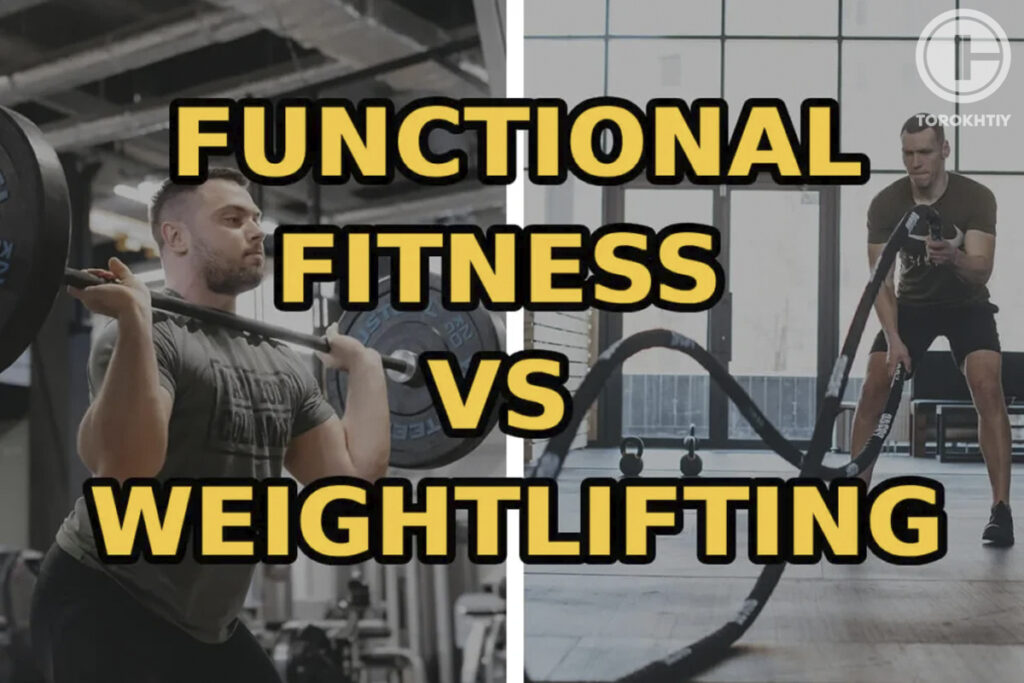
What Is Weightlifting?
Olympic weightlifting is a sport in which participants compete by effectively lifting the highest weights while using a barbell weighted with the plates from the floor to overhead. Snatch and clean & jerk are two exercises that athletes compete in.
The wide-grip lift known as the snatch involves lifting the weighted barbell overhead in a single motion.
A combined movement known as the clean and jerk involves lifting the barbell from the platform to the front rack position – clean phase, then lifting it above – jerk phase.
Each weightlifter is given three attempts at the snatch and C&J, with the snatch attempts coming first. The total of the heaviest weight successfully lifted in kg for each lift determines an athlete’s score. Different weight classes, which differ for each gender and have changed every 3-4 Olympic cycles, are used for competition. Lifters earn a “incomplete” entry for the meets if they are unable to properly complete at least 1 snatch attempt and at least 1 C&J. Since the first Summer Olympic Games in 1896, weightlifting has been an Olympic sport.
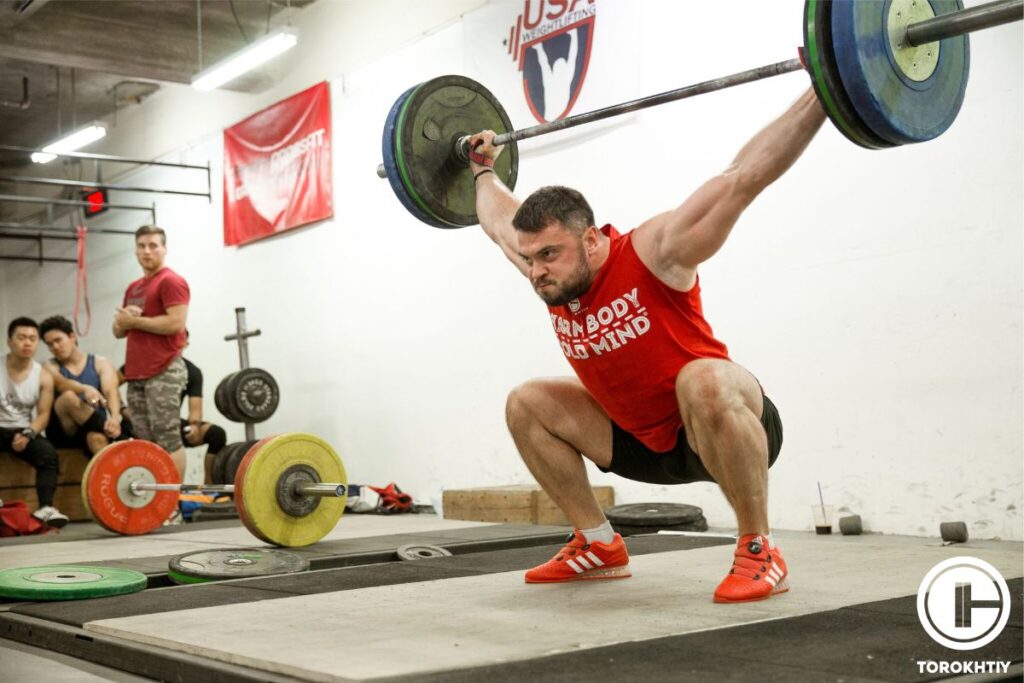
Weightlifting Workouts
Weightlifters devote the most of their training preparation to performing different barbell lifts in order to increase their strength. The majority of exercises are snatch, C&J, pulls and squats variations.
Every day training structure
1. Warm-Up
Before each training session, weightlifters go through a full warm-up that lasts 15 to 30 minutes and raises body temperature while incorporating dynamic stretches and movement-specific drills.
2. Main Workout
Weightlifters workout for between one and two hours, focusing mostly on: snatch, C&J, pulls, squats variations and additional drills. A good example of this type of programming is – Male Competition Program.
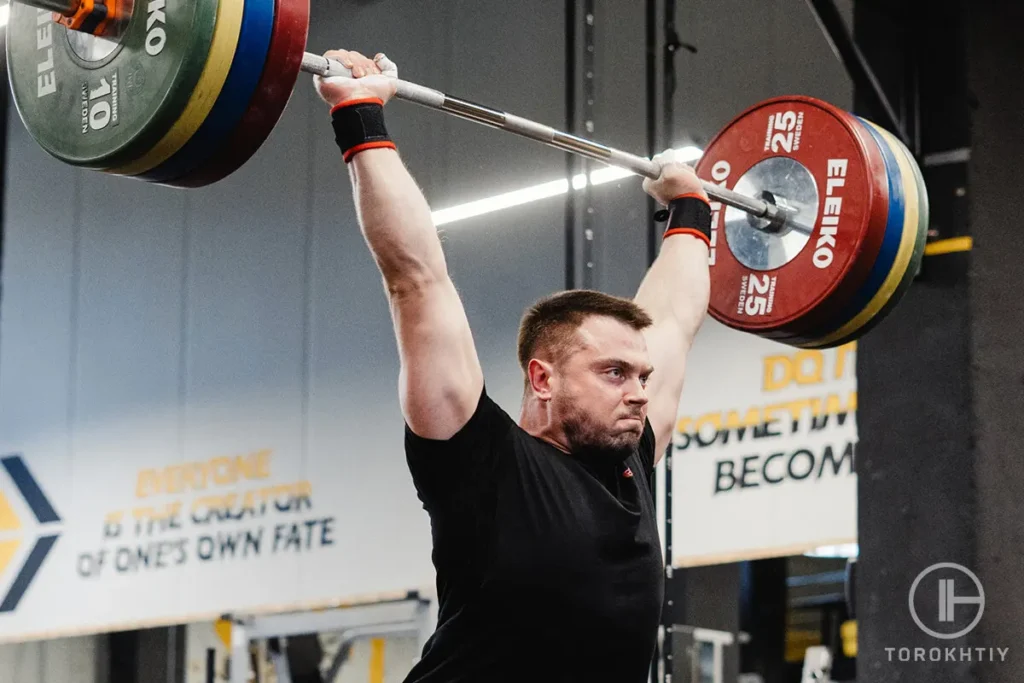
3. Cool Down
After each training session, weightlifters go through a specific cool down for 10 to 30 minutes. Some athletes spend this time concentrating on their technique and finish their accessory workouts for the tiny muscles.
4. Training Schedule Per Week
Beginner weightlifters often work out for 1-2 hours, 3-5 days per week. Depending on the season, professional or elite weightlifters may attend up to 15 training sessions each week.
Lifters often base their yearly training schedule on a select few competitions. Instead of trying to stay in top shape all year, the objective is to perform at your best at the biggest events of the year.
In general, an athlete spends more time on general strength the further away from a competition they are. Lifters divert their attention away from the technical aspects of the lifts and toward increasing general strength.
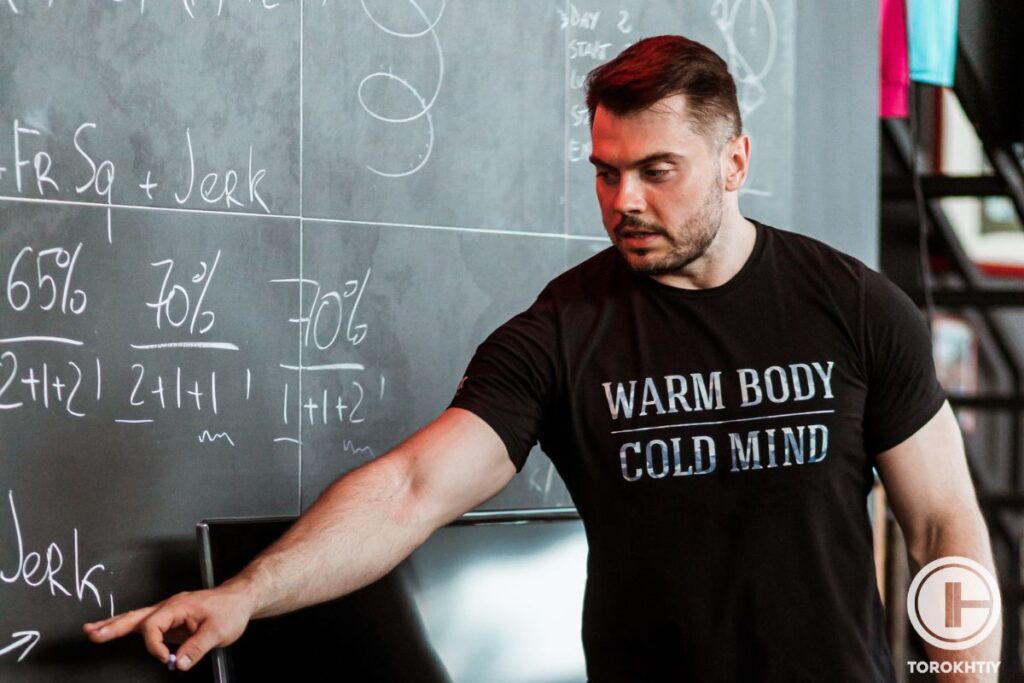
Here is a good example of an “off-season” training program for weightlifters – Weightlifting Bodybuilding.
During this “off-season”, some lifters even cut back on training sessions or start playing more outside activities to keep in shape. During this time, it’s not unusual to see lifters forsake the Olympic lifts. Many weightlifters choose to place a strong emphasis on strength development with workouts like squats and complexes, which are a series of linked barbell movements performed without breaks.
The training intensifies and gets more technical as the lifter approaches a competition. Different Snatch and C&J variants take the role of regular training. Of course, every rule has exceptions.
Weightlifting Pros & Cons
Positives:
Could be better:
Follow us!

Free!
Get a 2-week Weightlifting Program as a bonus for the subscription to kickstart your training plan!

Free!
What Is Functional Fitness?
About ten years ago, when box gyms started to appear not just in the USA but also across the world, functional fitness gained enormous popularity as a fitness training. Members of more than 13,000 affiliated gyms across 120 countries participate in functional fitness. Over 7,000 gyms only in the United States offer the fintess program. There are approximately 4 million functional fitness athlets worldwide, and the group has even been compared to a cult because of how dedicated its members are to the competitive style of training.
Functional fitnessis a type of high-intensity interval training; it is a strength & conditioning routine composed of functional movements carried out at a high level of intensity.
These movements include those you do every day, such as squatting, pushing, pulling, carrying etc. Many exercises that assist growing muscles include variants of squats, weightlifting, and pressing that endure for set periods of time. This is different from a typical exercise, which could specify how many repetitions to perform over any time.
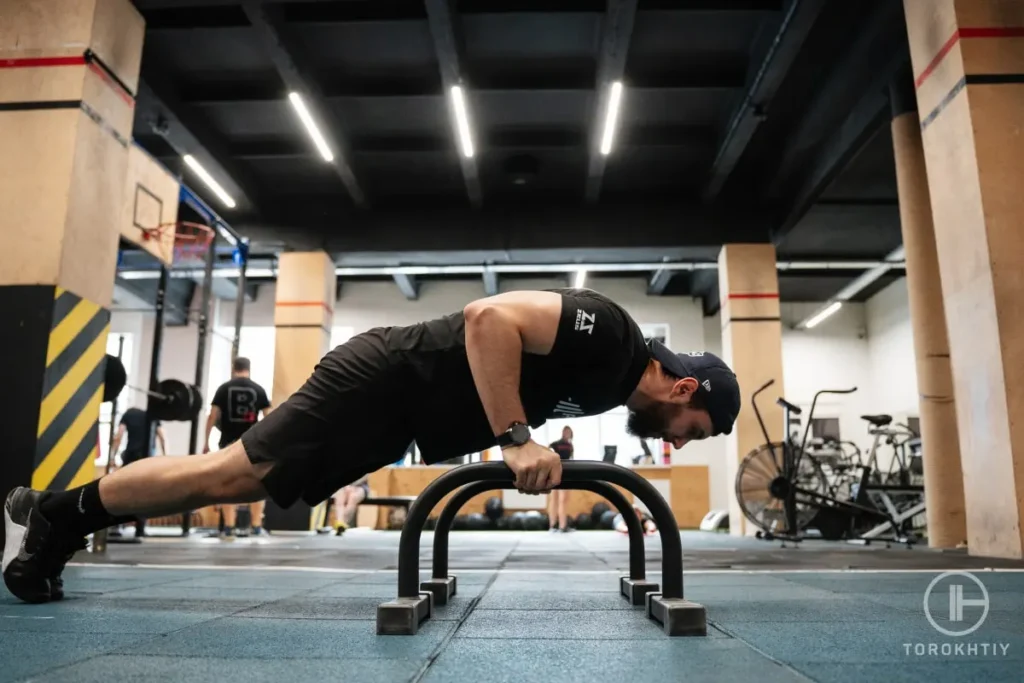
The emphasis placed on the factors of load, distance, and pace throughout the exercises, which aid in the development of strong levels of power, makes them so successful. To do this, the workout may make use of various types of equipment: barbells, speedropes, kettlebells, rowing machines, balls, airbikes, ect.
Functional Fitness Workouts
The four main components of a normal functional fitness exercise are warm up, power & strength block, (WOD) workout of the day and cool down. Each session can be adapted to any fitness level, so every person can participate.
The fundamental framework of functional fitness workout:
1. Warm-Up
You must warm up before the main part, just as with any other workout. Depending on the session’s primary objective, the exact functional fitness warm-up will alter.
However, it will entail:
Light aerobic exercises, such as two minutes on an assault bike, rowing machine, or ski erg. In order to improve ROM throughout your session, mobility practice is incorporated. A crucial component is muscle activation. Your muscles will warm up as a result, getting ready for an intense exercise. The duration of the warm-up might range from five to fifteen minutes.
2. Strength Block
Strength training is part of functional fitness. There are specific days when your workout will focus largely on building your strength through particular routines. Beginners will practice their form & technique by performing reps & sets of these exercises. Lifters who are intermediate and advanced will intensify these exercises to develop their strength in the 1-6 rep ranges.
3. WOD
Typically, this is a high-intensity circuit which incorporates many movements to test one or more aspects of your fitness, such as anaerobic power, coordination, conditioning, endurance, etc. This is one of the main differences in functional fitness vs weight training. Usually, WOD last somewhere between 20 and 30 minutes. However, if the strength block is shorter, it may occasionally be longer.
4. Cool Down
The goal of a cool down is to get your heart rate down to normal resting levels, and it usually lasts for five minutes on average.
Functional Fitness Pros & Cons
Positives:
Could be better:
Weightlifting vs Functional Fitness Comparison
The workouts’ unpredictability is therefore what sets functional fitness vs weightlifting. Olympic weightlifting concentrates on a smaller number of exercises to develop Snatch and C&J, but functional fitness workout concentrates on a large variety of varied type exercises.
1. Different Approach To Competition
The challenges that the participating athletes will face during the functional fitness games will not be explained to them until the day of the competition. In Olympic weightlifting, where they prepare for two lifts — the situation is very different. There are significant differences in the training equipment as well in functional fitness or strength training.
2. Different Training Goals
Functional fitness aims to combine power and endurance. High endurance/rep exercises are combined with some strength training during workouts. Olympic lifters aim for power, which combines strength and explosive speed. They work out emphasizing intensity over repetitions. Functional fitness athlets are strong and powerful, yet they cannot match the weights lifted by Olympiс weightlifters. The same is true for weightlifters.
3. Weightlifting Can Help Excel At Functional Fitness
Many athletes choose to focus more on weightlifting, which aids in performing functional fitness routines. Squatting improves weightlifting performance, which improves functional fitness performance, which is essentially just yet another method of indicating that they are more physically fit. Check this training program designed especially for functional fitness athletes who want to put more attention on Olympiс weightlifting – WL4FF.
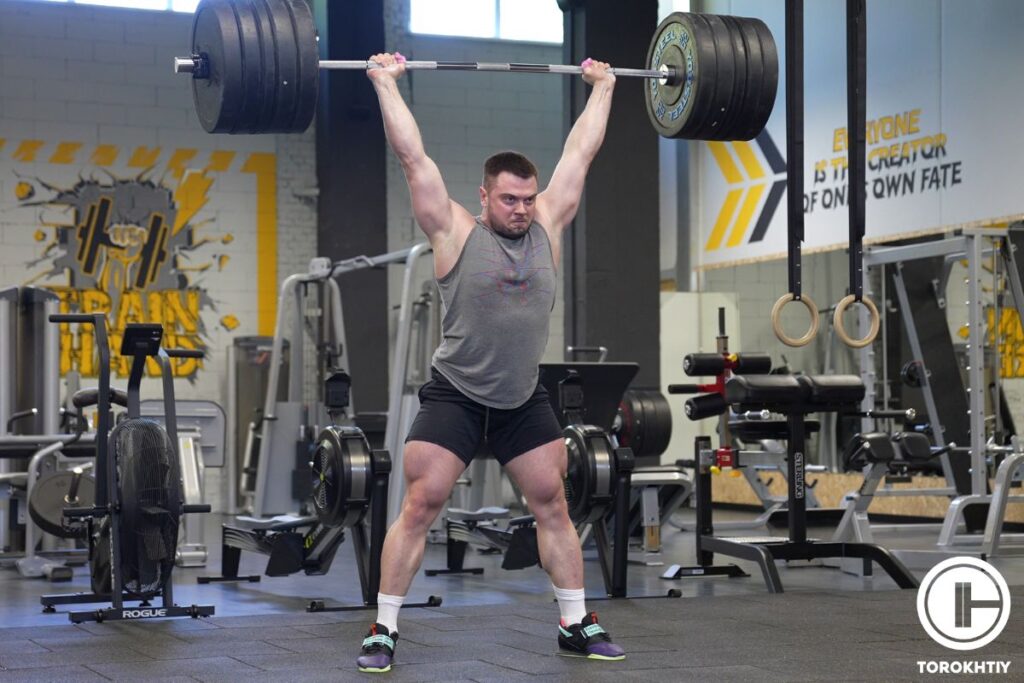
4. Balance Between The Two Is Difficult
Many experienced athletes and coaches advise that you select a choice: weightlifting vs functional fitness. You cannot have everything. It would be ideal to choose only one way, but choose at least one priority. Functional fitnessis more focused on overall fitness and the “model” look. Olympic weightlifting is mostly on strength and power, with little emphasis on appearance.
FAQ
Is Functional Fitness Or Weightlifting Better For Weight Loss?
While both weightlifters and functional fitness athlets may be used for demanding, intensive workouts, functional fitness provides a more effective way to lose weight while Olympic weightlifting encourages the development of speed and power.
Can I Build Muscle With Functional Fitness?
You need muscles and a body fat percentage low enough to show it if you want to seem athletic. You will surely gain muscular mass doing functional fitness. You might also enhance your mobility, flexibility, and stamina.
Is Functional Fitness Good For Strength Training?
Yes, of course! Functional fitness could be a useful workout for increasing your basic strength level and also cardiovascular fitness, agility, and flexibility.
Conclusion
So, is functional fitness preferable to weightlifting? The vast majority of those who have experienced a lot in both functional fitness and weightlifting claim that weightlifting is superior to functional fitness. This is more about setting objectives, making plans to achieve those goals, and attaining those goals than it is about the world’s fittest man. Because functional fitness is so unpredictable, a lot of athletes prioritize weightlifting at least twice a week. It’s your time now! Which training will you select? Please tell me everything in the comments!
Also read:
Why Trust Us?
With over 20 years in Olympic weightlifting, strength training, nutrition coaching, and general fitness our team does its best to provide the audience with ultimate support and meet the needs and requirements of advanced athletes and professional lifters, as well as people who strive to open new opportunities and develop their physical capabilities with us.
By trusting the recommendations of our certified experts in coaching, nutrition, and sports training programming, as well as scientific consultants, and physiotherapists, we provide you with thorough, well-considered, and scientifically proven content. All the information given in the articles concerning workout programming, separate exercises, and athletic performance, in general, is based on verified data.
The product testing process is described in more detail here.
Author: Sergii Putsov
Head of Sport Science, PhD
Best Results: Snatch – 165 kg,
C&J – 200 kg
Sergii Putsov, Ph.D., is a former professional weightlifter and National team member, achieving multiple medals in the 94 kg weight category at national competitions. With a Master’s degree in “Olympic & Professional Sport Training” and a Sport Science Ph.D. from the International Olympic Academy, Greece, Sergii now leads as the Head of Sport Science. He specializes in designing training programs, writing insightful blog articles, providing live commentary at international weightlifting events, and conducting educational seminars worldwide alongside Olympic weightlifting expert Oleksiy Torokhtiy.
Reviewed by: Oleksiy Torokhtiy
Olympic Weightlifting Champion
Best Results: Snatch – 200 kg,
C&J – 240 kg
Oleksiy Torokhtiy is a professional athlete boasting 20 years of experience in Olympic weightlifting. With multiple European and World titles under his belt, he has showcased his prowess in two Olympic Games (Beijing 2008 and London 2012). Upon concluding his illustrious career, Oleksiy dedicated himself to coaching. By 2022, he had conducted over 200 weightlifting seminars worldwide. He is the visionary behind an international sportswear and accessories brand known for its motto, “Warm Body Cold Mind.” Additionally, he is an esteemed author and the creator of a series of training programs and eBooks.
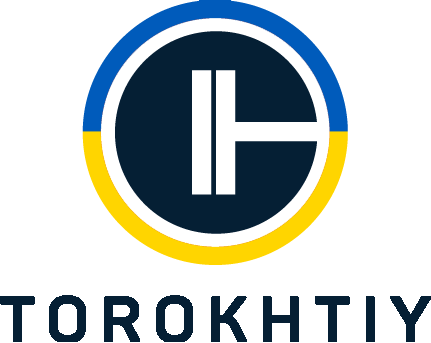



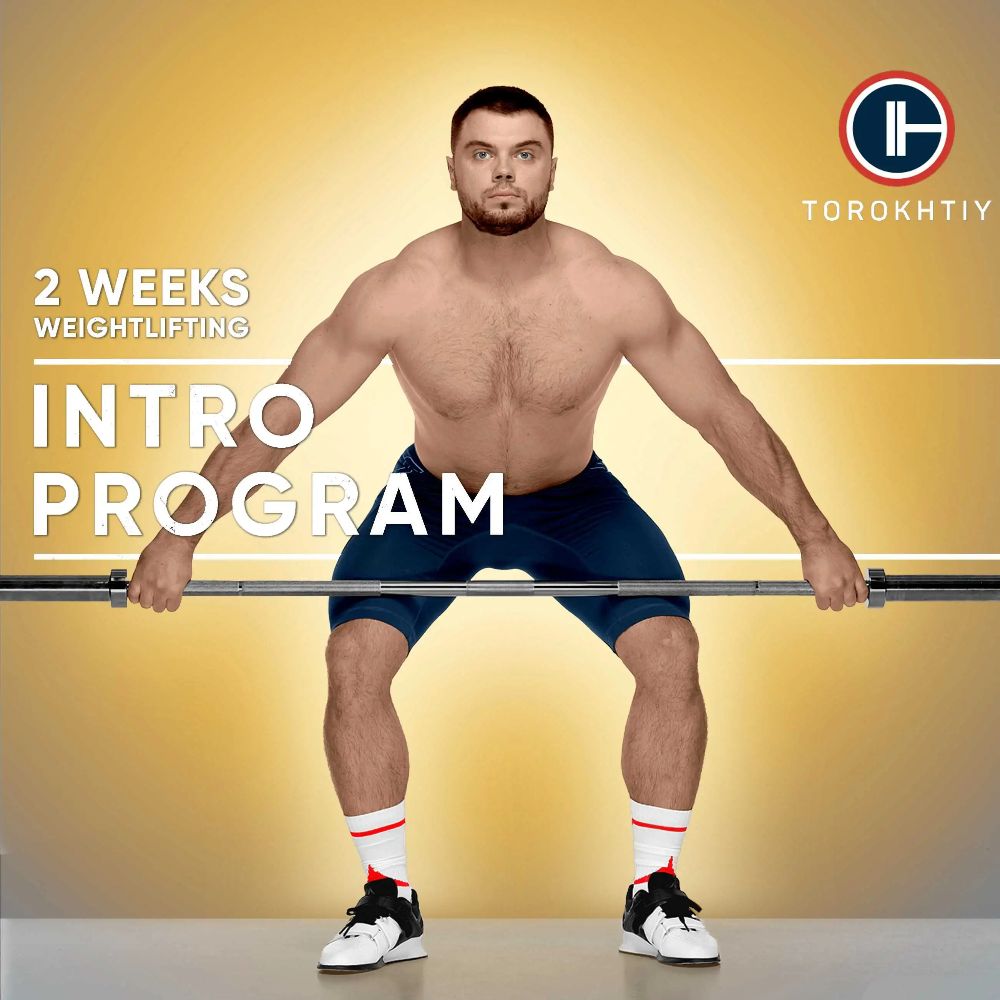
I have done both CrossFit and weightlifting. And I enjoy them both but I personally prefer weightlifting over CrossFit. I find in CrossFit you can injury yourself more if you don’t understand the technique of the barbell and the movements. As in weightlifting you work on the technique and how to lift the barbell well. So to this day I’m not a heavy lifter but I enjoy weightlifting over CrossFit. I enjoy the process of the technique and control you have with the barbell. So I continue to do weightlifting and then different exercises like running and stretching training on top of weightlifting. I find that more sustainable for me.
Nice blog! I really like the article and very helpful for me. Thanks for sharing.